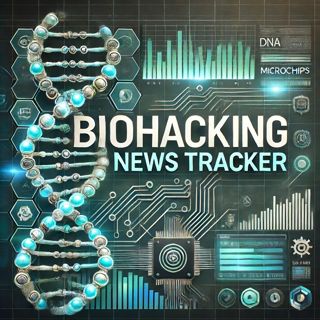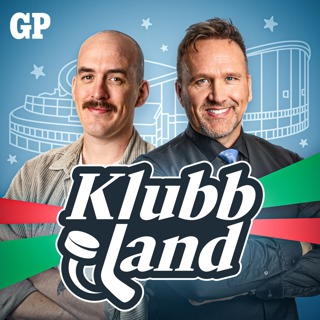
Biohacking Craze Drives Costly Longevity Experiments Amid Ethical Concerns
In the pursuit of extended lifespan and enhanced health, the concept of biohacking has gained substantial traction, particularly among longevity influencers. A movement predominantly shaped by male figures, biohacking merges the boundaries of experimental biology and personal wellness to optimize the human body's potential. This trend in self-improvement often draws individuals willing to invest significant resources into novel, yet sometimes controversial, technologies and practices.Biohacking encompasses a broad scope of activities ranging from genetic engineering, DIY biology, and nootropic supplements, to rigorous dieting and extreme physical regimens. Proponents believe that such interventions can significantly extend life, improve cognitive and physical performance, and possibly delay the effects of aging. It reflects a blend of Silicon Valley’s tech-centric efficiency and a deeply personalized approach to health and fitness.Influential figures within the longevity movement leverage their platforms to reach audiences eager for solutions to decelerate aging. These influencers often experiment with their bodies, using themselves as test subjects to demonstrate the potential effects of various biohacks. This includes everything from intermittent fasting and strict ketogenic diets to the use of peptide injections and cold thermogenesis (exposure to cold temperatures to increase metabolism). They also might utilize advanced medical monitoring to consistently track the impact of these interventions on their body’s biomarkers.A key aspect of this movement is the high cost associated with many of the promoted interventions. Specialized supplements, advanced genetic testing, and cutting-edge medical treatments can quickly become expensive, limiting access primarily to those with substantial disposable income. Despite the costs, followers are often convinced by the promise of a healthier, more robust, and longer life, making them willing to invest thousands in these emerging practices.Critical to the discussion of biohacking within the context of longevity is the understanding of its ethical, medical, and social implications. While the promise of fundamentally altering human biology to enhance life expectancy can be alluring, it also raises important questions about the safety, efficacy, and morality of such practices. Medical experts frequently caution that many biohacking strategies have not been thoroughly vetted through rigorous scientific research. This lack of empirical evidence poses risks, as individuals might expose themselves to potential health hazards or unproven treatments.Moreover, the movement's male-dominated hierarchy suggests a possible gender bias in the approach and accessibility of biohacking practices. This demographic skew could influence which interventions are prioritized and how they are marketed, potentially alienating or overlooking issues specific to other groups.In conclusion, while the biohacking movement shows promise in pushing the boundaries of what is scientifically and medically possible in extending human life, it remains a field fraught with controversy. The blend of high costs, ethical dilemmas, and underexplored scientific efficacy make it a complex yet fascinating frontier in the quest for longevity. As this movement grows, it will be crucial for both participants and observers to critically evaluate the benefits and drawbacks of turning the human body into a site of high-tech experimentation.This content was created in partnership and with the help of Artificial Intelligence AI
6 Juli 20243min

"India's First Biohack Centre Signals Biohacking's Mainstream Emergence"
Biohacking is emerging as a groundbreaking movement in the health and wellness industry, combining elements of biotechnology, medical science, and personal health analytics to optimize one's health. This trend is gaining traction globally, with India now joining the biohacking wave through the establishment of its first Biohack Centre by the Kerala-based healthtech startup, Vieroots.Set to open in Kochi, this center symbolizes a significant stride in making advanced health optimization techniques more accessible. Biohacking centers like the one Vieroots plans to establish focus on personal health management by allowing individuals to dive deep into their physiological processes. Services typically include analysis of genetic data, monitoring of biometrics, and interventions that can range from nutritional advice based on DNA analysis to more advanced regenerative medicine techniques.The core aim of biohacking is to provide tools and insights that empower individuals to become the architects of their own health. Techniques utilized might include everything from simple dietary changes and supplement recommendations to more advanced strategies like cold therapy or neurofeedback sessions, tailored to enhance mental performance.Moreover, the luxury hotel chain Jumeirah has also introduced biohacking concepts into their wellness offerings, illustrating the increasing incorporation of biohacking into mainstream wellness practices. Jumeirah’s approach includes sophisticated options like brain biohacking, which uses neurotechnology and various forms of neurostimulation to boost cognitive function, alongside other wellness therapies such as cryotherapy, a method that involves exposure to extremely cold temperatures to reduce inflammation and improve recovery times.These developments highlight a shift towards proactive personal health management, where individuals are equipped with the knowledge and tools to influence their well-being positively. The opening of India’s first Biohack Centre indicates a broader acceptance and integration of biohacking methodologies into health management practices, potentially paving the way for a new era in personalized healthcare. This center in Kochi, alongside initiatives like those by Jumeirah, represent only the beginning of biohacking's potential impact on global health and wellness standards. As biohacking continues to evolve, it is likely to transform not just individual health practices but also the broader scopes of medical science and health care infrastructure.This content was created in partnership and with the help of Artificial Intelligence AI
4 Juli 20242min

"Biohacking: The Pursuit of Enhanced Human Potential"
Biohacking is a fascinating and growing field that blends the boundaries of biology, technology, and personal health optimization. The term "biohacking" encapsulates a broad range of activities from DIY biology, genetic modification, and self-experimentation, aimed at enhancing cognitive and physical performance. The realm of biohacking can range from simple lifestyle and dietary changes to more extreme measures including the use of devices like vagus nerve stimulators.One notable figure in the biohacking community is Dave Asprey, often considered a pioneer in the space. Asprey's approaches, such as the promotion of high-fat, low-carbohydrate diets, and his endorsement of technologies like vagus nerve stimulators, have spurred a large following. Vagus nerve stimulation, for example, involves a bioelectronic device that interacts with the body's nervous system to improve health metrics such as heart rate variability (HRV), a popular focus among biohackers for its potential to enhance overall wellbeing and stress management.The market for biohacking is seeing intense competition but also high growth, alongside extreme valuations, especially as technology giants like Apple Inc. venture deeper into health and wellness technologies. These companies are not only contributing devices that could be used in biohacking—like smartwatches that monitor biometrics—but also fueling interest in how technological innovations can be integrated into personal health practices. While the biohacking community is diverse, it is unified by a common goal: to fundamentally understand and improve human life by leveraging technological advancements and a profound commitment to self-improvement. Despite controversies and ethical questions regarding the extent and methods of human enhancement, biohacking continues to attract a passionate following eager to push the limits of human potential.As the field grows, both in terms of technological advancement and popularity, it presents a range of implications, from improved health and prolonged longevity to discussions about equity, privacy, and the definition of what it means to be human. Whether viewed as a pursuit of peak personal wellness or a gateway to the future of human evolution, biohacking stands at the cutting edge of science and self-discovery.This content was created in partnership and with the help of Artificial Intelligence AI
23 Juni 20242min

Biohacking Craze: Supplement-Fueled Quest to Reverse Aging Grips Entrepreneurs
Biohacking is attracting significant interest both online and offline as individuals explore methods to enhance bodily functions and optimize health. As it garners widespread attention, certain figures within the biohacking community emerge with practices that capture the public's eye. One such person is a 41-year-old entrepreneur, Sean Kelly from California, who reportedly consumes over 40 supplements daily in a bid to reverse his biological age. This practice underscores a key component of biohacking: the use of supplements and advanced technology to manipulate the body's mechanisms and potentially slow aging.Biohacking can be broadly categorized into several methods, ranging from genetic engineering to nutrient supplementation and lifestyle adjustments. In its essence, biohacking embodies the quest to make one’s body function better and more efficiently. Entrepreneurs like Kelly use a mix of commercial and functional medical approaches to achieve desired results, although their methods can sometimes be controversial and debate-provoking.For those less familiar, biohacking may involve rigorous lifestyle and dietary changes, monitored by high-tech tools including blood tests and sleep trackers. These technologies provide tangible data points that biohackers use to adjust their behaviors or supplement intakes. Notably, the practice is not just confined to small circles but is influencing broader industries, including wellness and spa sectors.The spa industry, for example, is evolving with biohacking, sleep optimization, spiritual wellbeing, and eco-design leading the way. As highlighted in reports such as one from ArchiExpo e-Magazine, 2024 promises advanced spa trends where these elements are expected to be at the forefront. This synergy between biohacking and spa experiences suggests an increasing consumer desire for wellness practices that are scientifically backed and technologically driven, catering to the body’s every need.Critically, while the field of biohacking grows, so does the commercial side. Various companies are now venturing into the market of testing biological age, offering customers expensive tests to determine their physiological rather than chronological age. These tests, often costing hundreds of dollars, feed into the biohacking narrative of quantifying and subsequently manipulating one’s health and aging process.Yet, biohacking is not without its criticisms. Skeptics question the effectiveness and safety of taking numerous supplements, pointing to the lack of robust scientific evidence backing many biohackers' claims. They argue that the body's biology is complex and not fully understood, making it risky to undertake extensive alterations through aggressive supplementation or radical lifestyle changes.In the broader discourse, figures like Bryan Johnson, another prominant biohacker, continue to popularize the concept by publicly documenting their personal health experiments and fostering a culture of self-optimization. This not only helps propel the movement into mainstream visibility but also sparks critical debates on the ethical, medical, and philosophical implications of such practices.In conclusion, as biohacking seeps into various facets of everyday life and industries, the core debate centers around its transformative potential versus its ethical boundaries and scientific validity. What is clear is that biohacking continues to push the envelope on traditional understandings of health, well-being, and human potential, leading to both advancements and controversies in equal measure.This content was created in partnership and with the help of Artificial Intelligence AI
22 Juni 20243min

Biohacking: Pushing the Boundaries of Personal Health and Performance
Biohacking represents an intriguing fusion of biology, technology, and personal health. Participants, known as biohackers, aim to optimize their physical and mental performance by tracking and modifying various aspects of their biology through a range of techniques, from simple dietary changes and supplement regimes to more advanced methods, such as gene editing and implantable devices.The concept has gained considerable traction over recent years, driven partly by advancements in technology that have made data more accessible and partly by a growing desire among the public to take a more proactive approach to health. At the cutting edge of this movement are figures like Dave Asprey, who popularized the term 'biohacking' with his focus on 'Bulletproof' nutrition to enhance bodily functions, and Bryan Johnson, an entrepreneur heavily invested in reversing the aging process.Biohacking can be segmented into various practices, from 'grinders' who physically alter their bodies with technological implants to gain new capabilities or enhance existing ones, to those who use nootropics or 'smart drugs' to improve cognitive function.Bryan Johnson’s endeavors notably push the boundaries of biohacking with his comprehensive approach to tracking and manipulating his own biology to reverse aging. Hosting events like the 'Don’t Die' dinner, he exemplifies the extreme end of biohacking, using scientific knowledge and available technology to extend life and enhance health. His actions underscore a core philosophy of the biohacking community: the belief that we are not fixed entities and that with the right tools and knowledge, we can engineer ourselves to better states of being.This shift from passive patient to active participant in personal health is reshaping the health and nutrition industries. Companies specializing in biometric monitoring devices, personalized nutrition, and even genetic sequencing are finding an enthusiastic market among biohackers looking to tailor their lifestyles and diets to their unique biological needs.Moreover, the allure of biohacking also raises important ethical and safety questions. The freedom to experiment tends to clash with regulatory frameworks designed to ensure medical safety. DIY biohacks, especially those involving genetic modification, present significant risks not just to the individual performing them but potentially to society at large if not properly managed.Despite these concerns, the push for personal empowerment in health continues to grow, expanding the reach of biohacking into mainstream practices. As technology advances and becomes more integrated into everyday life, biohacking's potential to revolutionize personal health appears bound only by the limits of the technology and the creativity of the individuals who wield it. Whether for enhancing personal performance or managing disease, biohacking offers a profoundly personalized approach to health and wellness, signaling a new era of participatory medicine driven by and tailored to the individual.This content was created in partnership and with the help of Artificial Intelligence AI
20 Juni 20243min

DIY Crafts Offer Summer Entrepreneurship Opportunities for Kids
During the summer months, young individuals often look for ways to earn money and keep themselves engaged. Besides the traditional mowing lawyards or lemonade stands, craft-making and selling offer valuable opportunities for kids and pre-teens to build entrepreneurial skills, creativity, and financial literacy without the need for a formal job.One interesting approach that has gained popularity is through DIY crafts. By creating and selling handmade items, kids can explore their artistic talents while earning some cash. Here’s a detailed look at three crafting ideas that are both fun and potentially profitable for kids during the summer.1. **Pumpkin Crafts for Sale**: Crafting themed items can be particularly lucrative around specific holidays or seasons. For instance, making easy DIY yarn pumpkins or pumpkin pie crafts can attract buyers looking for autumn-themed decorations. These crafts require minimal materials and can be a hit at local craft fairs or online platforms like Etsy. In addition to yarn pumpkins, kids might create other pumpkin-related items like pumpkin guts slime, which is popular around Halloween, or less messy crafts like popsicle stick door hangers and tissue paper crafts.2. **Juneteenth Inspired Crafts**: Special holidays like Juneteenth offer unique niches for craft selling. Kids can make bracelets using the colors red, black, and green to symbolize this important day, which celebrates the emancipation of enslaved people in the United States. Such cultural crafts not only have a market among those celebrating the day but also among those who wish to show support and educate others about the historical significance of Juneteenth. By focusing on meaningful crafts that resonate with cultural events, young crafters can tap into a more conscious consumer base.3. **Seasonal and Thematic DIY Items**: Beyond specific holidays, there are numerous opportunities for crafting around general themes or seasons. For example, during summer, kids might focus on making and selling items like DIY popsicle magnets for refrigerators, custom-decorated flip-flops, or hand-painted beach tote bags. Creativity can extend to almost any item that might appeal during a particular season. Even crafting special items for events like July 4th, such as themed party decorations or patriotic crafts, can provide timely opportunities to cater to festive consumers.Marketing these crafts can also be a fun learning experience. Platforms like Facebook, Twitter, and WhatsApp are invaluable for promoting products to a local audience. Additionally, setting up a stall at local markets or collaborating with neighborhood stores can increase visibility. The process of making and selling crafts is not just about earning money—it's also about developing hard and soft skills. Kids learn about costs, pricing, marketing, customer relations, and time management, which are critical life skills. Furthermore, the sense of achievement and the positive feedback they receive can be excellent for their confidence and self-esteem.In conclusion, summer crafts provide a wonderful platform for kids to make money and learn valuable skills. By focusing on DIY crafts that are easy to create and sell, particularly those tied to seasonal themes or holidays, young entrepreneurs can explore their creativity and learn the basics of running a small business—all while having fun and making profit.This content was created in partnership and with the help of Artificial Intelligence AI
19 Juni 20243min

Biohacking Goes Extreme: Millionaire Spends $20K on Remote Island Treatment
Biohacking has increasingly become a popular method for those looking to push the boundaries of human biology, aiming to enhance physical and cognitive performance through a blend of medical, nutritional, and electronic techniques. Among the most enthusiastic proponents of this trend are individuals like Bryan Johnson, a multimillionaire who has reportedly spent substantial sums to optimize his body and brain function.Based in California, Johnson's journey into the depths of biohacking took an intriguing turn with his most recent endeavor—a $20,000 treatment on a remote island off Honduras. This bold move underscores the lengths to which biohackers are willing to go to achieve their desired levels of enhancement. Though details on the specific procedures Johnson underwent are scant, such high-cost interventions typically involve a combination of experimental and traditional medical treatments that target various aspects of physiological functioning.Meanwhile, entities like ChristiMD Medical Group, recently rebranded as LifeSculpt by ChristiMD, signify the formal and commercial expansion of biohacking into the healthcare industry. Under the leadership of Dr. Christi Pramudji-Dawe, LifeSculpt is pioneering in integrating biohacking with longevity practices, aesthetics, and urogynecological health. This transition highlights the increasing demand for biohacking interventions, as more individuals seek novel ways to enhance their health and appearance.The services provided by LifeSculpt cater to a clientele that is keen on using cutting-edge science and technology to improve their quality of life. Whether it's through nutritional adjustments, hormone therapies, or more invasive procedures, the goal remains the same: to harness the body's potential and possibly extend its capabilities beyond conventional limits.Biohacking, in essence, represents a profound shift in how we view human health and potential. By combining elements of medical science, technology, and self-experimentation, biohackers like Johnson and medical entrepreneurs like Dr. Pramudji-Dawe are at the forefront of exploring new frontiers in human enhancement. As this field continues to grow, it will likely present both extraordinary opportunities and ethical challenges, mirroring the complexities of merging human biology with technological advancement.This content was created in partnership and with the help of Artificial Intelligence AI
18 Juni 20242min

Biohacking Takes Center Stage: Medical Groups Integrate Cutting-Edge Approaches to Optimize Health and Longevity
In the evolving landscape of medical health and wellness, a dynamic shift is noticeable among practicing groups that are integrating cutting-edge approaches like biohacking into their services. A striking example is ChristiMD Medical Group, which has recently rebranded itself as LifeSculpt by ChristiMD. This repositioning underscores a growing industry trend where medical providers are not just treating illnesses but are actively enhancing life quality through technology and innovative practices.Founded by Dr. Christi Pramudji-Dawe, LifeSculpt by ChristiMD now specializes in a niche yet expanding area of healthcare that includes longevity, biohacking, aesthetics, and urogynecological health. This transformation reflects a broader interest in leveraging medical science to optimize human performance and well-being—a field often termed as 'biohacking'. Typically, biohacking involves a combination of medical, nutritional, physical, and electronic techniques to manipulate the body's natural systems to enhance performance, vitality, and health.Biohacking is no longer a fringe activity but is increasingly mainstream, as evidenced by its adoption by high-profile businesses like Equinox. Equinox, known for its high-end fitness clubs, has ventured into the longevity market with a new program reportedly priced at $40,000, aimed at helping its members extend their life spans. The program promises access to the latest advancements and techniques in longevity science, once again highlighting the commercial appeal and growing consumer interest in biohacking.At its core, biohacking can range from simple lifestyle and dietary changes to extensive genetic editing and implant technology. It taps into the human aspiration to not only extend lifespan but also to improve the quality of life and physical capabilities. As companies like LifeSculpt by ChristiMD adopt these practices, they cater to a clientele that is increasingly informed and enthusiastic about the potential to transform their health through science.As the interest in biohacking grows, so does the conversation around its ethical, legal, and health implications. The accessibility of biohacking modalities raises important questions about equality, safety, and the nature of human enhancement. As this field evolves, regulatory frameworks will likely be challenged to keep pace with the speed of developments.Therefore, the transition of ChristiMD Medical Group to LifeSculpt by ChristiMD and the introduction of high-cost longevity programs by fitness giants like Equinox signify a shift towards a future where healthcare meets lifestyle optimization, driven by advancements in medical technology and a deeper understanding of human biology. This blend of technology, medicine, and consumer health is not just about treating the sick but about enhancing the human experience, signaling a new era in human health development.This content was created in partnership and with the help of Artificial Intelligence AI
17 Juni 20243min





















